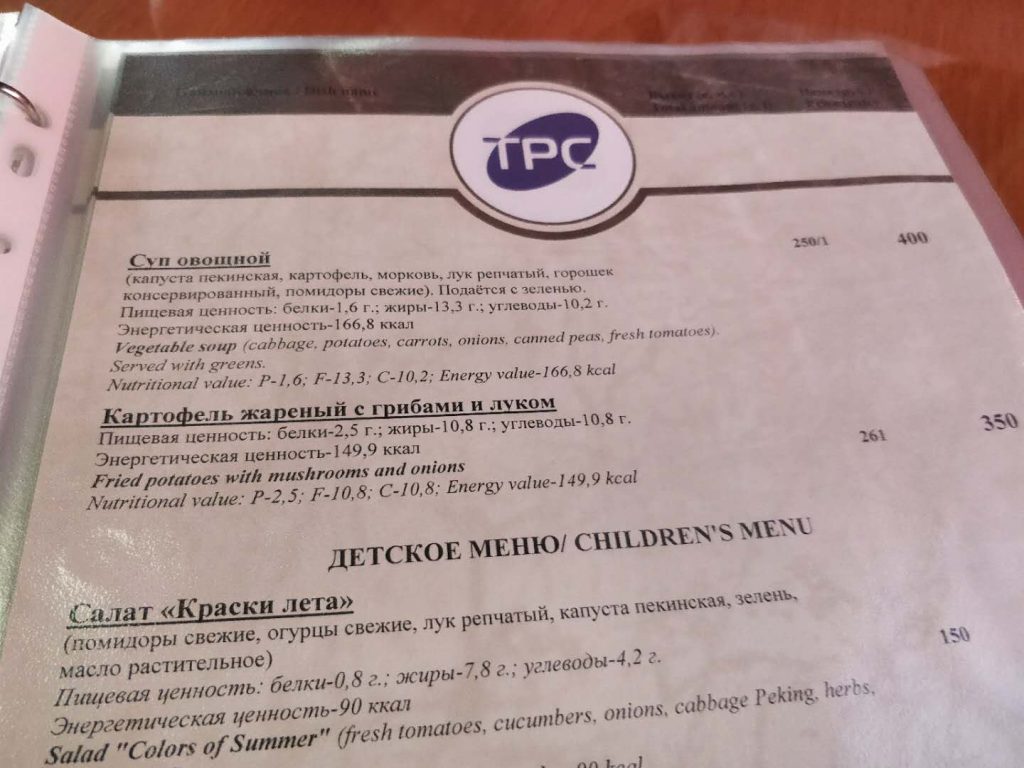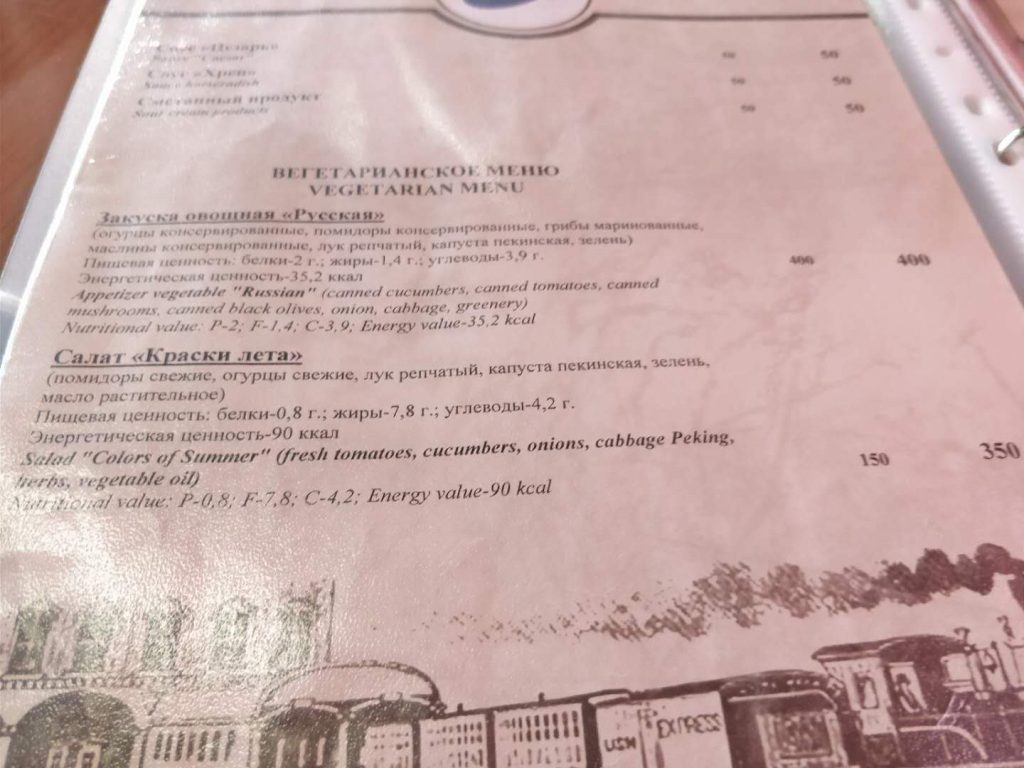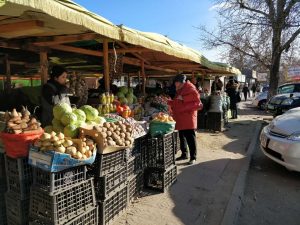Any long distance travel can be quite taxing for vegan diet, but travelling throughout countries not generally renowned for their vegan-friendliness just adds to the complications… But don’t let that put you off your once-in-a-lifetime trip on the Transsiberian!
Vegans have been there, done that, and lived to tell the tale – and thankfully pass on their knowledge!
Follow these simple steps, and you’ll be well under way for your cross-continental trip!
What can I eat on the Trans-Siberian?
The dining cart on the Transsiberian changes depending what country you’re in. In China, you’ll have two meals in the dining cart. These come included in the cost of the ticket. You have no say in what you get, it’s simply placed in front of you as you enter the cart. This meal typically consists of meatballs, veg, and rice. If you want to claim your meal, make sure to say straight away about any dietary requirements – they might just give you it without the meat, meaning a hearty rice & veg meal. Although, it cannot be guaranteed that the veg is cooked in something vegan-friendly, and that there won’t be any cross-contamination. If in doubt, stay clear…

Also, you can ask for second or third helpings of rice if needs be! I’ve found rice and soy sauce to be an excellent meal in desperate times.
The Mongolian carriage was something quite different. The interior is absolutely spectacular, but that’s another story.
They speak very little English or Chinese on this cart, so if you’re wanting to eat here, make sure to know what you want to say in Mongolian first..! The menu offers no explicit vegetarian dishes, but there is rice, bread, and lots of salad items. Manage to communicate your requirements and they’ll be able to create something for you. The staff are very friendly and always willing to do their best to please you!
To my delight, the Russian carriage offered an entire full page of vegetarian dishes – some of which could quite easily be veganised. If you’ve been craving some proper food for the past few days, this will definitely be a pleasant surprise. Only problem is, the lack of English spoken by the staff on the restaurant carriage is very real. If you can speak any Russian, you’ll be fine. An idea is to bring a card with you in Russian (and indeed in Chinese and Mongolian whilst you’re at it) outlining your dietary requirements. Hopefully, they’ll be able to rustle something up for you! There is also rice and bread dishes (whether the bread contains milk or not is unknown) and a great coffee – which comes black.


The restaurant carts are also quite costly at around $20 per meal. Whilst the meals are good, they’re relativelysmall and won’t keep you full for long. Eating at the restaurant is a good way to help you not get bored of any snacks you’ve brought with you, a good treat when train life is getting you down, or just a great way to help get some nutrients into you with fresh produce.

There are many stops along the way from Beijing to Moscow where you can stock up on food, drinks and snacks. These options, however, will be particularly limited for vegans. You may be able to find the odd bit of bread or crisps along the way, or even some nice dark chocolate as you get closer to Russia. Drinks will be easy to get hold of, but don’t expect soy milk to be anywhere handy…!
All things considered, it’s definitely best to make sure you’re fully prepared for your 6-day journey and pack expecting to get limited food on the way.
How can I prepare 6 days worth of food?
This is a good question.
It is possible to survive from only snacks and food you’ve brought with you, but you have to make sure to prepare thoroughly to ensure you won’t go hungry or lack any key nutrients.
Here’s a list of things you can bring:
Fruit:
Apples, Oranges, Bananas, Pears etc (Other fruit that’s easy to eat.)
Couscous packets:
Packets that just need water adding to them – you have an unlimited supple of hot water to play with.
Pre-made meals (for first 2/3 days) or takeaway food:
When cooking, I usually prepare 2/3 meals at a time. You can simply do this with something that can keep (i.e. tomato-based pasta), stock it up with veggies and arrange it into 3 meals worth of food. It isn’t so hot on the train for the first couple of days (depending on in which season you’re travelling) so it should keep just fine. Or, if you’re lazy, get a takeaway (i.e. Indian, pizza) and keep that with you!
Snacks:
Crisps, chocolate, nuts, seeds, mochi, dried fruits
Nutrition:
Supplements, nutritional yeast (to top on anything you eat!), marmite/vegemite, for that B12.
Pot-noodles:
If you’re lucky enough to have access to vegan pot noodles before your travel, stock up on these! I’d say around 10 should be grand..!
Home-made pot noodles:
These are great if you don’t have access to anything or want something a bit healthier. Simply buy yourself a large glass mason jar (this will be your “pot”) and any other ingredients. Glass noodles, pre-cooked veg, leafy greens, pre-chopped garlic, spices, chilli… Any other flavours you want! If you’re super prepared, you could put ingredients into separate sandwich bags for easy access and so you can control your portions.
The key to any journey when travelling as a vegan is preparation. Surviving on the Trans-Siberian is no different. It’s certainly possible to eat well on the train – and you’ll probably find that your amount of preparation means you’ll be eating better than everyone else!
Now you’re ready and set for an epic
YPT Eurasian Adventure tour on the Trans-Siberian!
If you’re still worried or have any other questions about eating as a vegan on the Trans-Siberian, contact our resident vegan here who’s tried and tested surviving as a vegan on the Trans-Siberian.





